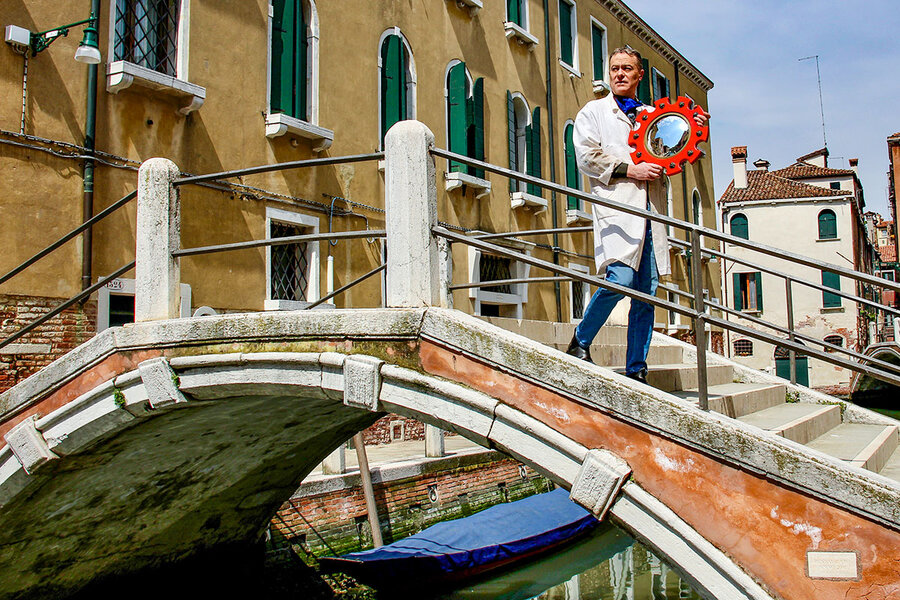How Venetian artisans marry tradition and innovation
Loading...
| Venice, Italy
Subtle, yet significant. Those are the ways to describe the innovations pursued over the centuries by Venice’s glass blowers, bookbinders, and shipbuilders, whose Old World attention to detail and use of quality materials still resonate today.
In fact, the constant pursuit of innovation is a bit of a tradition itself. It’s how, in 1574, workers at the Arsenale shipyard assembled a galley in an hour – complete with ropes, sails, oars, and armament – with an assembly-line process that predated Henry Ford’s by more than 300 years.
Why We Wrote This
Are tradition and modernity always at odds? For the artisans of Venice, adherence to centuries-old guild specifications is paramount. But these glass blowers, bookbinders, and shipbuilders constantly seek to improve their crafts as well.
The crafts of glassmaking, bookbinding, and gondola-building have changed little over the centuries in this city, which is celebrating its 1,600th anniversary this year. Artisans ply their skills according to precise guild specifications that predate the Italian Renaissance.
“There are rules that govern color combinations and proportions,” says Stefano Coluccio, explaining why he does not accept special commissions for his mirrors.
Yet for all the adherence to tradition, the 1,000 or so artisans in Venice also find ways to innovate within the parameters of their craft. For example, while gondolas have been in existence since the 11th century, their design has evolved in subtle yet significant ways. On a recent visit, shipwright Matteo Tamassia, whose gondolas can take a month or more to construct, discussed an improvement to the gunwale with a fellow boat-maker who dropped by.
That spirit of invention was on display as early as the 16th century. The story goes that in 1574 Henry III of Valois, king of France and Poland, attended a dinner at the Arsenale shipyard, where he watched as a galley was assembled within the hour – complete with ropes, sails, oars, and armament. The Arsenale’s efficient assembly-line process predates Henry Ford’s by more than 300 years.
As the pandemic dried up tourism, the artisans of Venice have continued to pursue their craft. Shipwrights are still taking orders for new gondolas. Bookbinders are still producing the notebooks that made Venice famous back in the Gutenberg era. Mask-makers are devising fabulous creations even as the Venice Carnival was canceled this year. Centuries of changing fortunes have fostered patience.
A common thread binds all these artisans: They keep experimenting, improving techniques, and introducing novelties – invisible to the untrained eye – to their ancient crafts. These arts are not just old; they are timeless.














